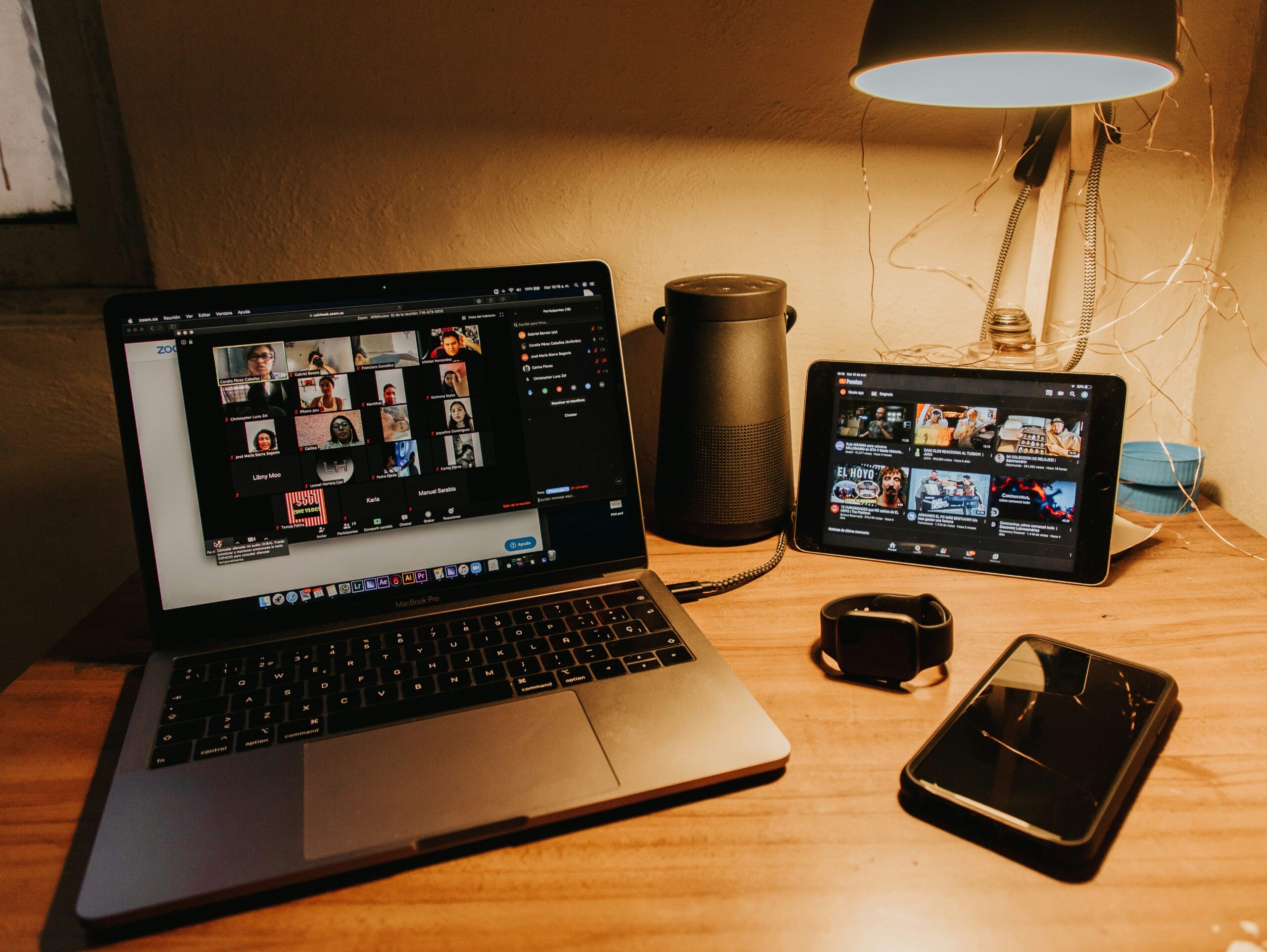Introduction
Virtual learning has become the new norm in the rapidly evolving corporate training landscape. With the rise of remote work and distributed teams, organizations are turning to online platforms to deliver impactful employee training experiences. While virtual training offers flexibility and convenience, it also presents unique challenges, particularly when fostering participant engagement and connection.
One often overlooked aspect of virtual training is the impact of whether or not the facilitator is on camera. In this blog post, we’ll explore why facilitators should keep their cameras on during virtual training sessions, regardless of whether participants choose to have them on or off. We’ll delve into the benefits of leading by example, the impact of visible presence on engagement and rapport, and a few extra practical tips for enhancing the virtual training experience.
Leading by Example: Setting the Standard for Engagement
Facilitators play a critical role in shaping the learning environment and setting the tone for engagement. Our visible presence on camera sends a powerful message to participants: that we are fully present and invested in the training experience. By leading by example and keeping our cameras on, we demonstrate our commitment to active participation and create a sense of accountability for ourselves and our attendees. 💼🎥
When facilitators keep their cameras off, it can inadvertently signal disengagement or lack of interest, negatively impacting participants’ motivation and focus. On the other hand, when facilitators are visibly engaged and attentive, it encourages participants to do the same. Our visible presence catalyzes engagement, encouraging participants to participate, ask questions, and contribute to discussions actively. 💡👥
Fostering Connection and Rapport
Building rapport and fostering connections can be challenging in virtual training settings, especially when participants are scattered across different locations. However, the facilitator’s camera presence can help bridge this gap and create a more intimate and connected learning environment.🌐🤝
When participants see the facilitator’s face, it humanizes the training experience and makes it more personal and relatable. Participants are more likely to engage with someone they can see and connect with on a visual level. Our facial expressions, gestures, and body language convey important cues and signals that help participants feel connected. 👩💼👨💼💬
Gauging Reactions and Adjusting Delivery
If your participants have their cameras on, by following your example or otherwise, you can take advantage of some benefits as the facilitator. Benefits like being able to gauge participants’ reactions in real-time and adjust your delivery accordingly. When we can see participants’ faces on screen, we can assess their engagement, comprehension, and interest and tailor our approach accordingly.
For example, if participants look confused or bored, we can pause to clarify concepts, ask questions to encourage participation or inject humor to lighten the mood. Conversely, if we see that participants are nodding along and smiling, we can proceed with confidence, knowing that our message is resonating with the audience. 📊🎭
By leveraging visual cues and non-verbal communication, we can create a more dynamic and tailored training experience that keeps participants engaged and focused throughout the session. Our ability to read and respond to participants’ reactions in real time is a valuable asset that enhances the overall effectiveness of our training delivery. 💬📈
Practical Tips for Enhancing the Virtual Training Experience
Now that we’ve explored the benefits of keeping the facilitator’s camera on, let’s discuss some practical tips for enhancing the virtual training experience:
-
- Ensure Good Lighting and Background: Choose a well-lit area for your virtual training sessions with minimal distractions. Position yourself facing a window or use soft, diffused lighting to avoid harsh shadows. Pay attention to your background and remove any clutter or distractions that may detract from your presence. 🌟📸
-
- Maintain Eye Contact: Make an effort to maintain eye contact with the camera lens throughout the session, rather than looking at your own image, other distractions, or heaven forbid another screen. This creates a sense of connection and engagement with participants, making them feel seen and acknowledged. 👀💬
-
- Encourage Camera Usage: While it’s important for facilitators to keep their cameras on, encourage participants to do the same. Explain the benefits of visible presence and how it enhances the training experience for everyone. Lead by example and create a culture of camera usage within your training sessions. 📹👩💼👨💼
-
- Use Breakout Rooms and Polls: Breakout rooms and polls are valuable tools for increasing engagement and interaction in virtual training sessions. Use breakout rooms for small group discussions and collaborative activities, and use polls to gather feedback and gauge participants’ understanding of key concepts. 🔄📊
-
- Provide Opportunities for Interaction: Incorporate interactive elements such as Q&A sessions, opportunities to use reactions, and group discussions to keep participants engaged and actively involved in the training process. Encourage participants to ask questions, share their insights, and contribute to the conversation. 💡💬
Follow Up with Resources and Support: After the training session, follow up with participants to provide additional resources, support, and opportunities for continued learning. This could include links to relevant articles, videos, or discussion forums where participants can further explore the topics covered in the training. 📚🔗

Conclusion
In conclusion, the facilitator’s camera presence plays a crucial role in shaping the virtual training experience. Keeping our cameras on demonstrates our commitment to active participation, fostering connection and rapport with participants, gauging reactions, adjusting our delivery in real time, and creating a more engaging and interactive learning environment.
As facilitators, let’s lead by example and prioritize visible presence in our virtual training sessions. By doing so, we can enhance the overall effectiveness of our training delivery and create meaningful connections that educate and inspire our learners.
Remember, the power of presence extends beyond the virtual classroom – it’s a mindset that informs our approach to training and drives positive outcomes for learners. Let’s harness the power of our presence and continue to innovate and adapt to meet the evolving needs of our participants in the virtual landscape. 🚀👩🏫
Facilitators can create more immersive and impactful virtual training experiences for their participants by practicing visible presence and engagement. Lead by example and inspire meaningful learning and growth in the virtual classroom. 🌟🎓




